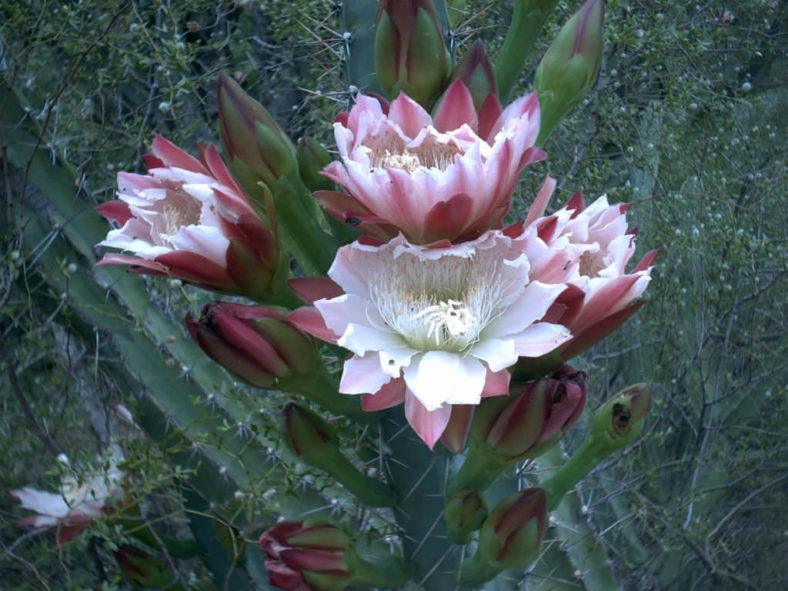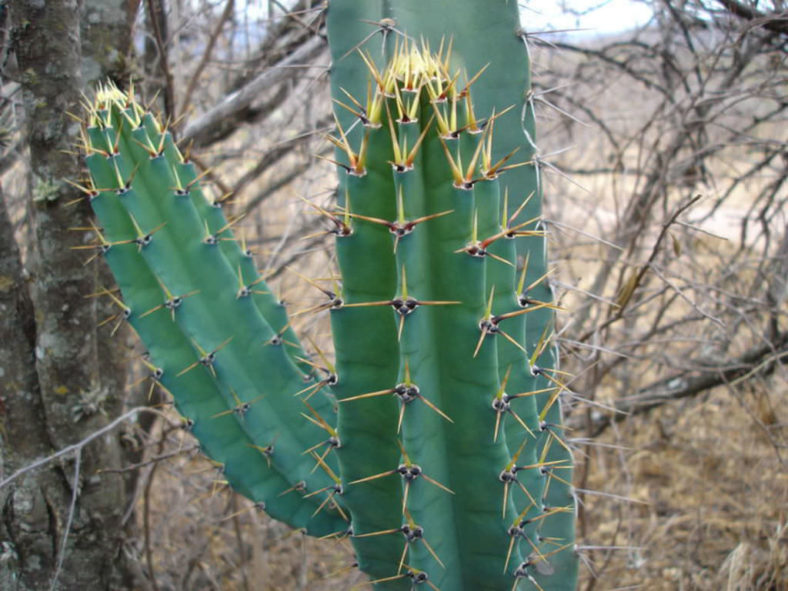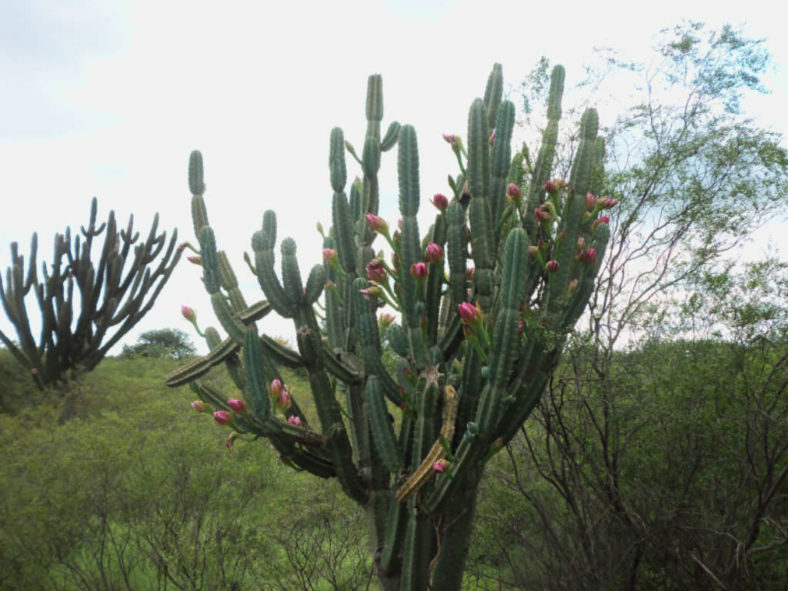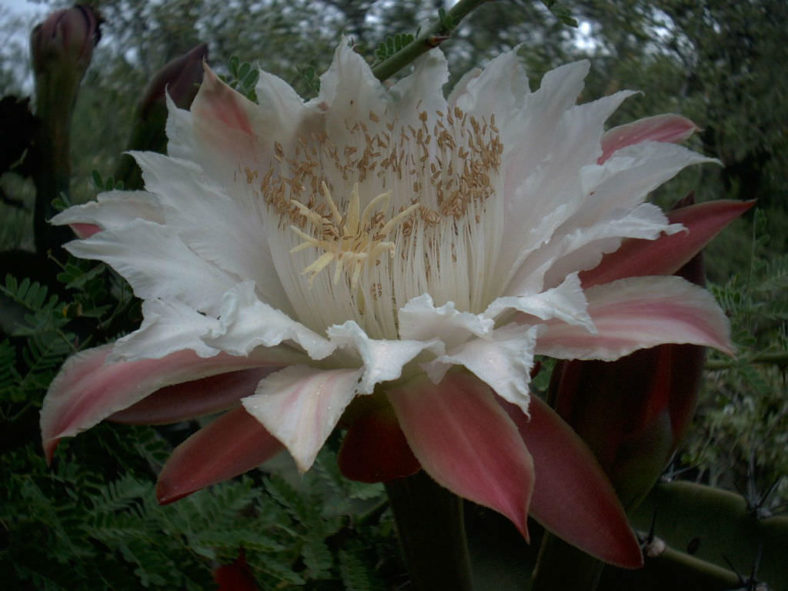Scientific Name
Cereus validus Haw.
Synonym(s)
Piptanthocereus validus, Cereus forbesii, Piptanthocereus forbesii
Scientific Classification
Family: Cactaceae
Subfamily: Cactoideae
Tribe: Cereeae
Genus: Cereus
Description
Cereus validus, also known as Cereus forbesii, is a shrubby or tree-like cactus with ribbed blue-green stems. It can grow up to 23 feet (7 m) tall and has a trunk with a diameter of up to 16 inches (40 cm).
The flowers are white to reddish and appear in summer. They can reach up to 8 inches (20 cm) long and 5 inches (12.5 cm) in diameter. The fruits are red with lilac pulp and tiny black seeds.

Hardiness
USDA hardiness zones 9b to 11b: from 25 °F (−3.9 °C) to 50 °F (+10 °C).
How to Grow and Care
Like most cacti, Cereus are fairly low-maintenance and hardy. Ensure they receive enough water without becoming waterlogged, especially during the summer, and fertilize them for the best results. If the roots have become black or overly soft, the cactus could be experiencing root rot. Cut away the affected parts and replant them. Most gardeners interested in cacti should be able to cultivate these without much problem.
If your Cereus outgrows its container, it may become necessary to repot it. If so, ensure the soil is dry and then remove the pot. Knock away old soil and prune away any rotted or dead roots, then replace it in a new pot and backfill it with fresh soil. Do not overwater cacti planted in new pots, as this can lead to root rot. It should be left dry for about a week and then watered lightly.
These cacti propagate pretty easily from cuttings. Simply sever a branch and replant in moist, well-drained soil.
See more at How to Grow and Care for Cereus.
Origin
Cereus validus is native to South America.
Forms and Cultivars
Links
- Back to genus Cereus
- Succupedia: Browse succulents by Scientific Name, Common Name, Genus, Family, USDA Hardiness Zone, Origin, or cacti by Genus
Photo Gallery
Click on a photo to see a larger version.



